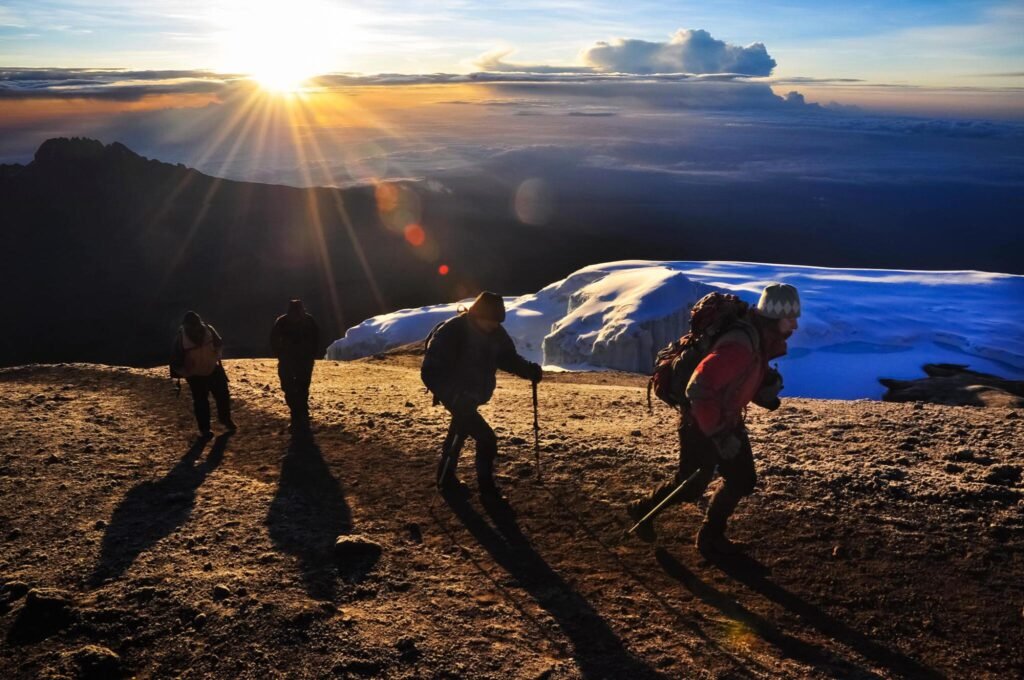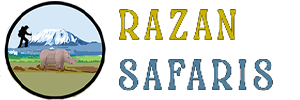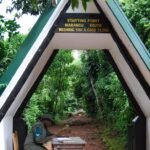Understanding Kilimanjaro Acclimatization
Acclimatization is a crucial aspect of any high-altitude trek, particularly on Kilimanjaro, where the rapid gain in altitude can pose significant risks of altitude sickness. Proper acclimatization can make the difference between a successful summit and having to turn back. Here’s a detailed look at acclimatization on Kilimanjaro.

What is Acclimatization?
Acclimatization is the process by which the body adjusts to lower oxygen levels at higher elevations. As you ascend, the air pressure decreases, leading to a decrease in the oxygen available to your body. To cope with this, your body undergoes several physiological changes, such as increasing breathing rate and red blood cell production.
Key Principles of Acclimatization
Climb High, Sleep Low: This principle involves hiking to higher altitudes during the day and returning to a lower altitude to sleep. This allows your body to gradually adapt to the altitude.
Slow and Steady Pace: Maintaining a slow and steady pace helps reduce exertion and allows your body more time to adjust.
Stay Hydrated: Dehydration can exacerbate the symptoms of altitude sickness. Drinking 3-4 liters of water daily is recommended.
Adequate Nutrition: Eating a high-calorie diet helps maintain energy levels and supports acclimatization.
Listen to Your Body: It’s crucial to monitor for symptoms of altitude sickness and communicate with your guide.
Acclimatization to high altitude is different on each route due to the overnight camp locations, steepness of the trail, and daily trekking distance. The summit is the final test for acclimatization: climbs that take seven days or more have a distinctively higher success rate in reaching the summit than treks that cover six days or less.
Acclimatization has a stronger influence on reaching Uhuru Peak than any other factor, including age or even fitness level. For example, a group of older trekkers on a seven-day Lemosho program (one of the best acclimatization profiles) has a more likely chance of summiting successfully than a team of young athletes on a five-day variation on the Marangu Route.
The best acclimatization transition is available on the 7-day variations of Lemosho, Machame, and Rongai routes. If you are strapped for time, 6-day Lemosho and Marangu variations are good picks.
Unless you are an experienced climber with prior acclimatization, choosing a 6-day variation of the Machame route is a bad idea. While Machame is otherwise a great trail, its shorter itinerary is very taxing and has a remarkably lower success rate.
The very best way to safely acclimatise on a Kilimanjaro climb is to choose a good route. A good route doesn’t take you up the mountain too quickly. It also includes at least one opportunity to ‘climb high, sleep low’.
Is acclimatisation important?
Yes. That’s one very big, and very loud, yes. Whenever you enter an area of high altitude – and let’s peg that at anything greater 3,000 m above sea level – you need to take precautions to ensure you don’t get the altitude bends. Because if you rush headlong into a higher altitude, sore ears will be the least of your problems.
The highest point on Kilimanjaro is Uhuru Peak. This is the goal of every Kilimanjaro trekker. You want your turn to stand on Uhuru Peak and shout some more modern, trendier version of “I’m the king of the castle!” over the clouds and plains of Africa. But Uhuru Peak is 5,895 m above sea level. That’s five or six kilometres higher up into the atmosphere than what most of us are used to. We need to ease our bodies into that sort of elevation so that they don’t panic and throw an altitude tantrum.
Tips for Enhancing Acclimatization
Medication: Some trekkers use medications like Diamox (acetazolamide) to help prevent altitude sickness. Consult with your doctor before taking any medication.
Positive Mental Attitude: Maintaining a positive attitude and staying mentally strong can help you push through the physical challenges.
Avoid Alcohol and Caffeine: Both can contribute to dehydration and interfere with acclimatization.
Sleep Well: Rest is crucial for recovery and acclimatization. Take advantage of the comfortable huts on the Marangu Route to get good sleep.
By understanding and prioritizing acclimatization, you increase your chances of reaching Uhuru Peak safely and successfully.








[…] routes, with more days on the mountain, increase your chances of summit success by having a better acclimatization protocol. Some people try to save on the cost by opting for the shortest route […]